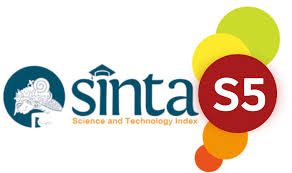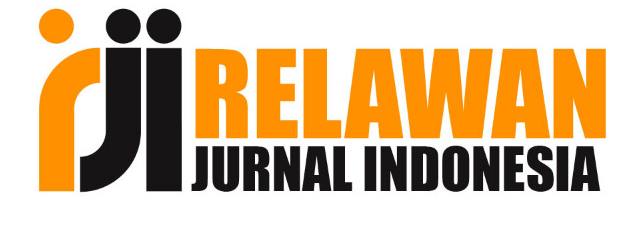IMPROVING LISTENING ACHIEVEMENT THROUGH DICTOGLOSS TO THE TENTH GRADE STUDENTS OF SMA N 3 PALEMBANG
DOI:
https://doi.org/10.36982/jge.v5i1.209Abstract
The objective of the study was to find out whether or not Dictogloss is effective in improving students’ listening achievement to the tenth grade students of SMA N 3 Palembang. The method of the study was quasi – experimental design, non – equivalent control group design. The sample of this study was 40 students which was selected from class X Mipa 2 to be sample. The data were collected by using listening test which consisted of 50 questions. In analyzing the data, paired sample t-test and independent sample t-test were used. Based on the results of statistical analyses, it was found that t-obtained was 8.437, which was 0.05 of the level significance with the degree of freedom (df) 19 with the critical value of t-table 2.0930. so it can be concluded that the alternative hypothesis (Ha) was accepted and the null hypothesis (Ho) was rejected, because t-obtained( -8.437) higher than t-table (2.0930) and significance level P (.000) was lower than α (0.05). it mean that there was significance difference between the tenth grade students of SMA N 3 Palembang who were taught through Dictogloss and those who were not. It also indicated that Dictogloss could improve the students’ listening achievement of tenth grade students of SMA N 3 Palembang.Â
Key words : Improving, listening, and dictogloss.
References
Brown, S. (2006). Teaching listening. USA : Cambridge University Press.
Cresswell, J. W (2005). Educational research : Planning, conducting, and evaluating quantitative research. Colombus : Pearson Merrill Prentice Hall.
Daura, R. J. (2013). Advances in language and literary studies: Using dictoglossas an interactive method of teaching listening compehension, 4(2), (113).
Fraenkel, J. R atal (2012).How to design and evaluate research in education. NY: Mc.Grawhill companies, Inc.
Harmer, J. (2007). The practice of English language teaching. UK: Longman.
Indriyanti, D (2013). Teaching listening using dictogloss to improve students’ listening skill at the eighth grade of SMP Negeri 1 Pangeran.
Islam, N. M (2002).An analysis on how to improve tertiary EFL students’ listening skill of English, 2(2) (213).
Jacob, G (2003). Combining dictoglossand cooperative learning to promote language learning, 3(1) (13).
Nunan, D. (2002).An introduction to research methods and tradition. USA: Cambridge University Press.
Rost, M. (2002). Listening task and language acqusition, Barkeley: University Of California
Sharma, N. (2011). Strategies for developing listening skill. India
Vandergrift, L (1999). Facilitating second language listening comprehension: acquiring successful strategies. Oxford University Press.
Vasiljevic, Z. (2010). English language teaching: Dictogloss as an interactive method of teaching listening comprehension to L2 Learners, 3(1), p. 43 – 46.
Wardani (2014). The Effectiveness of using dictogloss teaching technique to improve students’ listening skill of SMK DiponegoroSalatiga.
Wulandari (2011). Improving students’ listening ability by using spot the dictogloss to the eighth grade students of SMP N 3 Ngargoyoso Surakarta.
Downloads
Published
How to Cite
Issue
Section
License
Global Expert: Jurnal Bahasa dan Sastra is published by Universitas Indo Global Mandiri and licensed under a Creative Commons Attribution-ShareAlike 4.0 International License.











